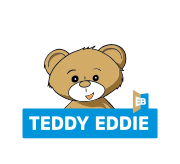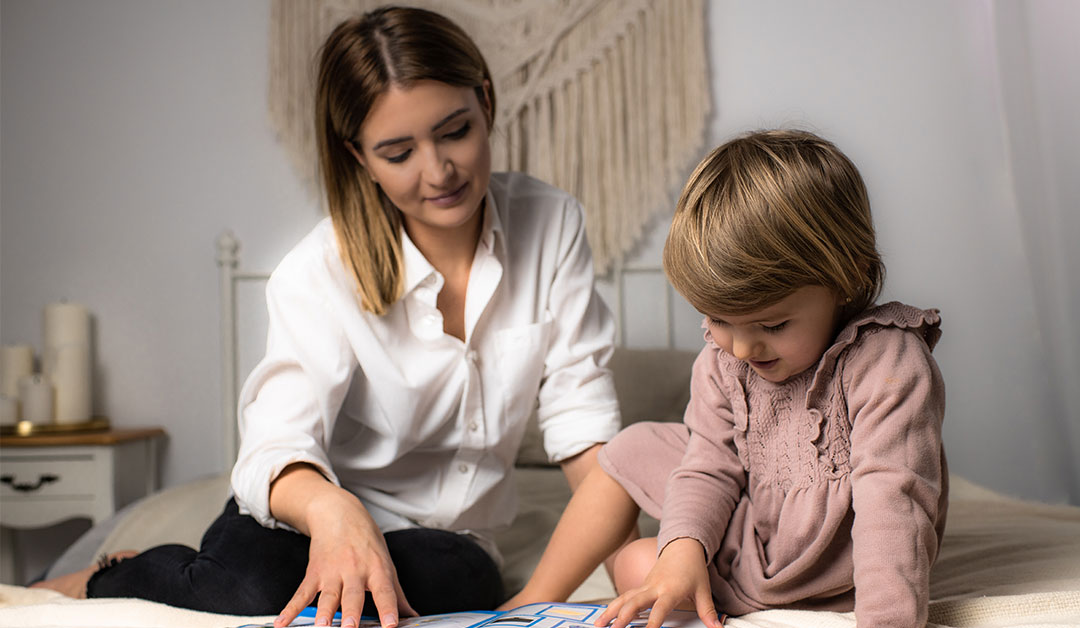When it comes to opinions on teaching their children at home, parents can be divided into two groups – those who believe that teaching is the responsibility of schools, and those who try to give their already tired children more lessons in their spare time.
Which attitude is better? We should choose the golden mean. On the one hand, it is important to remember that the key to success is to return regularly to the subject of study. (Why don’t we remember dates in history or mathematical formulas years later? Because most of us don’t use them on a daily basis, so our brain erases them from our memory.) On the other hand, conducting formalised lessons at the time allocated for rest and play is rightly met with rebellion by the child.
That’s why it is a good idea to “smuggle” English into children at home.
“Smuggle” is the key word. Introducing a rigid schedule is rarely successful. According to the child, teachers are the ladies at kindergarten or school, and parents are the people you can play with and fool around with.
A common mistake parents make in teaching at home is asking questions. The adult does not know or forgets that children usually learn languages naturally and not through grammar and translation, so they will not always be able to provide vocabulary translations at a satisfactory speed. Besides, questioning is by its nature quite aggressive, so it triggers a defensive reaction from the child, who prefers to say “I don’t know,” and have peace and quiet of mind.
So what shall we do?
- Having fun is allowed! A foreign language at this stage of education should primarily be used for playing. How can this be done? Here are some examples.
- Use the games you have at home and incorporate a foreign language into them. Agree with your child that you can get double points for an answer which is given in English.
- Organise a family riddle competition as a form of language review. To make the situation more serious, you can add a gadget such as a reception bell. Whoever knows the solution rings the bell and gives the answer.
- Play with the language also in everyday communication. Appreciate all attempts to use English in conversations, even those which are not entirely successful or which combine two languages. You have to start somewhere, and the most important thing at this stage of learning is the lack of a language barrier, not 100% correctness. You can reward the child with points in the form of buttons or paperclips thrown into a jar, and when the jar is full exchange it for a toy or the child’s favourite activity.
- The exchange can also be applied to time. In exchange for minutes spent working on the language (e.g. using an educational app), the child gets the same amount of time for their favourite activity. To avoid abuse from both sides, the conversion rate must be fair, so we should use a timer.
What about reading?
Reading, let alone reading in English, is often a pain in the early years of education. But there is a way around this too. If a child looks at the same words often enough and they have a clear context, he or she will eventually learn to recognise them. So, you can put English labels (at the child’s eye level!) on household appliances and toy boxes, and after a few weeks or months, take them off and ask the child if he or she remembers what they mean. Your little ones may surprise you!
Don’t push!
The advantage of the solutions described here is the fact that the child will probably not even realise that he or she has enthusiastically agreed to additional hours of learning. More importantly, he/she will begin to associate the English language with fun, homely warmth and time spent together with the family. And the brain, seeing that English words are so often useful, will stamp them as IMPORTANT and keep them ready at all times. By the way, you too, clever Parent, will also brush up on your own knowledge. Everybody wins!
__________________________________
The author of this article is Sonja Górniak – a graduate of Iberian Studies at the University of Warsaw. She was a student at Cambridge University, where she gained her Proficiency Diploma. For years she specialised in in-company courses, then by chance, she started teaching children a few years ago and fell in love with it. She is currently an Edu Bears methodology consultant and has been training, supervising and inspiring teachers to practise mindfulness for several years.
You can find out more about the Teddy Eddie method here: https://edubears.com/teddy-eddie/

